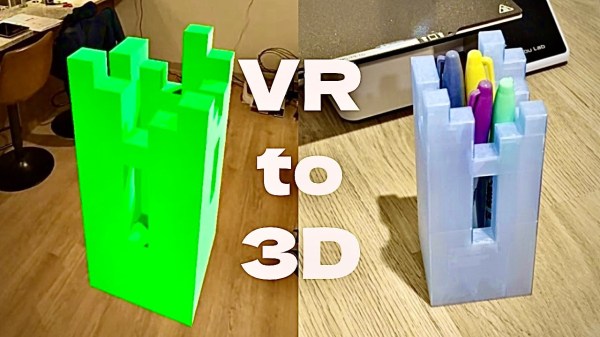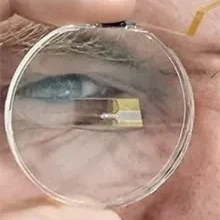We get it, CAD software can be daunting to learn. Somehow [Boaztheostrich] found it so daunting he procrastinated his way into a AR voxel-based CAD app he calls “ABCCAD”, written in Godot for the Meta Quest 3.
The app is simplicity itself: pressing A or X on the controller spawns a cube, which you can place wherever you like in virtual space by moving the controller in real space. The trigger then saves the cube position. Grabbing a cube uses the controller’s grab buttons. You can even change colors (with B or Y), but like in OpenSCAD it appears that’s not actually going to have any effect on the exported STL. Check it out in action in the demo video embedded below.
As far as CAD applications go, this is as simplistic as it gets, but there’s a certain charm to its simplicity. It’s almost like virtual LEGO. Besides, TinkerCAD wasn’t much more complicated when it started out, and look at it now.
Sure, one could say if [Boaz] wanted to do CAD he’d have been better off putting the time into learning good old OpenSCAD or FreeCAD (which can now get you SolidWorks certs, apparently), but this is a fun little app that let him stretch his chops in Godot, another great open-source tool. ABCCAD is, itself, open-source under an MIT license.
We seem to have a paucity of posts under the Godot tag, so if you’ve got a hack that uses the open-source game engine, please send us a tip.




![[miko_tarik] wearing diy AR goggles in futuristic setting](https://hackaday.com/wp-content/uploads/2024/11/diy-ar-goggles-1200.jpg?w=600&h=450)
![[miko_tarik] wearing diy AR goggles](https://hackaday.com/wp-content/uploads/2024/11/diy-ar-goggles-smallphoto.jpg?w=400) Creating Zero wasn’t simple. From designing the frame in Tinkercad to experimenting with transparent PETG to print lenses (ultimately switching to resin-cast lenses), [mi_kotalik] faced plenty of challenges. By customizing SPI displays and optimizing them to 60 FPS, he achieved an impressive level of real-time responsiveness, allowing him to explore AR interactions like never before. While the Raspberry Pi Zero’s power is limited, [mi_kotalik] is already planning a V2 with a Compute Module 4 to enable 3D rendering, GPS, and spatial tracking.
Creating Zero wasn’t simple. From designing the frame in Tinkercad to experimenting with transparent PETG to print lenses (ultimately switching to resin-cast lenses), [mi_kotalik] faced plenty of challenges. By customizing SPI displays and optimizing them to 60 FPS, he achieved an impressive level of real-time responsiveness, allowing him to explore AR interactions like never before. While the Raspberry Pi Zero’s power is limited, [mi_kotalik] is already planning a V2 with a Compute Module 4 to enable 3D rendering, GPS, and spatial tracking.










